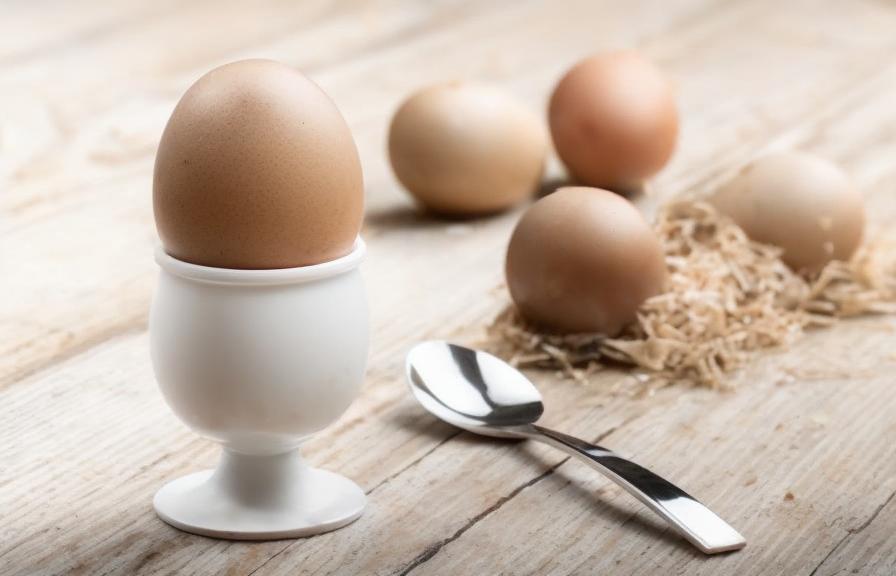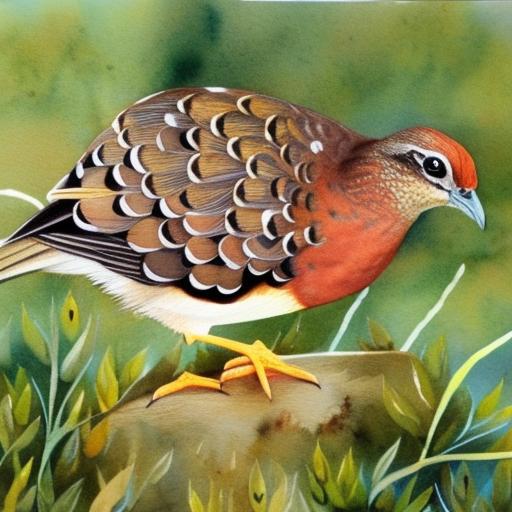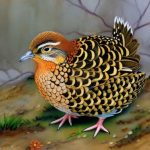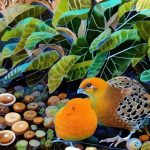Button quails, also known as Chinese painted quails, are small, ground-dwelling birds that are popular among avian enthusiasts for their unique appearance and low maintenance requirements. Breeding button quails can be a rewarding experience for bird lovers, as these tiny creatures are known for their interesting behaviors and adorable chicks. Before embarking on a button quail breeding journey, it’s important to understand the basics of their breeding process and the care they require. This article will provide a comprehensive guide to button quail breeding, covering everything from selecting the right breeding pair to caring for the chicks and addressing potential challenges along the way.
Button quails are relatively easy to breed in captivity, making them an ideal choice for novice breeders. With the right knowledge and preparation, breeding button quails can be a fulfilling and enjoyable hobby. Whether you’re interested in expanding your flock or simply want to experience the joy of raising button quail chicks, this guide will equip you with the information you need to successfully breed and care for these charming birds.
Key Takeaways
- Button quail breeding is a rewarding hobby that requires careful consideration and planning.
- Selecting the right breeding pair involves choosing healthy, unrelated birds with desirable traits.
- Setting up the breeding environment requires a suitable cage, nesting materials, and proper temperature and humidity levels.
- Caring for button quail chicks involves providing a balanced diet, warmth, and protection from predators.
- Breeding challenges such as infertility or aggression can be addressed through proper management and environmental adjustments.
Selecting the Right Breeding Pair
When it comes to breeding button quails, selecting the right breeding pair is crucial for producing healthy offspring. It’s important to choose birds that are in good physical condition and free from any genetic abnormalities or health issues. Look for birds that are active, alert, and have a well-groomed appearance. Additionally, consider the age of the birds, as younger quails are generally more fertile and capable of producing viable eggs.
When selecting a breeding pair, it’s also important to consider their compatibility. Button quails are social birds that thrive in pairs or small groups, so it’s essential to choose birds that get along well with each other. Observing the birds’ interactions and behavior can help you determine whether they are compatible for breeding. Keep in mind that button quails can be territorial, so introducing a new bird to an established pair should be done with caution to avoid potential conflicts.
In addition to physical condition and compatibility, consider the genetic diversity of the breeding pair. Inbreeding can lead to genetic abnormalities and health issues in offspring, so it’s advisable to avoid breeding closely related birds. If possible, choose birds from different bloodlines to ensure genetic diversity and reduce the risk of hereditary conditions. By carefully selecting a healthy, compatible, and genetically diverse breeding pair, you can increase the likelihood of producing strong and thriving button quail chicks.
Setting Up the Breeding Environment
Creating a suitable breeding environment is essential for the success of button quail breeding. The breeding enclosure should provide a safe and comfortable space for the breeding pair to nest and raise their chicks. A spacious enclosure with ample room for the birds to move around is ideal, as it allows them to engage in natural behaviors and reduces stress.
The breeding enclosure should be equipped with appropriate nesting materials, such as fine grass hay or shredded paper, to provide the breeding pair with a cozy nesting area. Additionally, providing hiding spots or shelters within the enclosure can help reduce stress and provide a sense of security for the birds. These can be in the form of small boxes or overturned plant pots that offer privacy and protection.
Maintaining optimal environmental conditions is crucial for successful button quail breeding. The enclosure should be kept at a consistent temperature between 75-80°F (24-27°C) to promote breeding behavior and ensure the well-being of the birds. It’s also important to provide a balanced photoperiod, with 14-16 hours of light per day to simulate natural daylight cycles and encourage breeding activity.
Furthermore, ensuring proper ventilation and cleanliness in the breeding enclosure is essential for preventing respiratory issues and maintaining overall health. Regularly clean the enclosure and remove any soiled bedding to create a hygienic environment for the breeding pair and their chicks. By setting up a well-equipped and carefully maintained breeding environment, you can create an ideal space for button quail breeding and ensure the well-being of your birds.
Caring for Button Quail Chicks
Once the breeding pair has successfully hatched their eggs, caring for button quail chicks requires attention to detail and specialized care. Newly hatched chicks are delicate and vulnerable, so it’s important to provide them with a nurturing environment to support their growth and development. One of the key aspects of caring for button quail chicks is ensuring they have access to appropriate nutrition from an early age.
Feeding newly hatched button quail chicks a high-quality starter feed is essential for their health and growth. The starter feed should be finely ground or crumbled to make it easily digestible for the tiny chicks. Additionally, providing access to clean water is crucial for keeping the chicks hydrated and promoting overall well-being. It’s important to monitor the chicks closely to ensure they are eating and drinking adequately, as any signs of weakness or dehydration should be addressed promptly.
In addition to nutrition, maintaining optimal environmental conditions is vital for the well-being of button quail chicks. The brooder temperature should be carefully regulated to keep the chicks warm and comfortable, as they are unable to regulate their body temperature effectively during the first few weeks of life. Providing a source of gentle heat, such as a heat lamp or heating pad, can help maintain the appropriate temperature in the brooder and support the chicks’ thermoregulation.
Furthermore, creating a stress-free environment for the chicks is essential for their development. Minimize disturbances in the brooder area and handle the chicks with care to reduce stress and promote healthy growth. By providing proper nutrition, maintaining optimal environmental conditions, and minimizing stress, you can ensure that button quail chicks receive the care they need to thrive during their early stages of life.
Breeding Challenges and Solutions
While breeding button quails can be a rewarding experience, it’s not without its challenges. Understanding common breeding challenges and knowing how to address them is essential for successful button quail breeding. One common challenge breeders may encounter is infertility or low hatch rates. This can be caused by various factors such as age-related fertility decline, inadequate nutrition, or environmental stress. To address this challenge, ensure that the breeding pair receives a balanced diet rich in essential nutrients and is housed in a stress-free environment conducive to breeding behavior.
Another potential challenge in button quail breeding is egg binding, a condition where a female quail is unable to lay eggs due to various reasons such as calcium deficiency or reproductive issues. To prevent egg binding, provide the breeding pair with access to calcium supplements and ensure they have a well-balanced diet that meets their nutritional needs. Additionally, monitoring the female’s behavior and seeking veterinary assistance if she shows signs of distress can help prevent complications related to egg binding.
Furthermore, aggression between breeding pairs or territorial disputes can pose challenges during the breeding process. To address this issue, provide ample space within the breeding enclosure to reduce competition and territorial behavior. Additionally, offering multiple feeding and watering stations can help minimize conflicts between birds. Observing the birds’ behavior closely and making adjustments to their environment as needed can help mitigate aggression and promote harmonious breeding conditions.
By being aware of potential breeding challenges and implementing proactive measures to address them, breeders can increase their chances of successful button quail breeding and ensure the well-being of their birds throughout the process.
Health and Nutrition Considerations

Maintaining optimal health and nutrition is essential for the well-being of button quails, especially during the breeding process. Providing a balanced diet that meets their nutritional needs is crucial for supporting reproductive health and ensuring successful breeding outcomes. A high-quality commercial game bird feed formulated specifically for quails can serve as a foundation for their diet, providing essential nutrients such as protein, vitamins, and minerals.
In addition to commercial feed, supplementing the diet with fresh greens, vegetables, and small amounts of fruits can provide added nutritional benefits for button quails. Leafy greens such as spinach, kale, and dandelion greens are rich in vitamins and minerals that support overall health. Additionally, offering small amounts of fruits such as berries or melons can provide natural sources of antioxidants and hydration.
Calcium supplementation is particularly important for female button quails during the breeding season to support eggshell formation and prevent calcium deficiencies. Providing access to crushed oyster shell or calcium supplements can help ensure that female quails receive adequate calcium intake to support their reproductive health.
Regular health checks and monitoring for signs of illness or distress are essential for maintaining the well-being of button quails throughout the breeding process. Keep an eye out for any changes in behavior, appetite, or physical appearance that may indicate underlying health issues. Seeking veterinary care promptly if any concerns arise can help address potential health issues before they escalate.
By prioritizing proper nutrition, providing essential supplements, and monitoring their health closely, breeders can support the overall well-being of their button quails and promote successful breeding outcomes.
Conclusion and Additional Resources
Breeding button quails can be a fulfilling endeavor for bird enthusiasts, offering the opportunity to witness the fascinating behaviors of these charming birds and experience the joy of raising adorable chicks. By selecting the right breeding pair, creating an optimal breeding environment, providing attentive care for chicks, addressing potential challenges, and prioritizing health and nutrition considerations, breeders can increase their chances of successful button quail breeding.
For those interested in delving deeper into button quail breeding, there are numerous resources available including books, online forums, and local avian clubs where breeders can connect with experienced enthusiasts and gain valuable insights into best practices for button quail care and breeding. Additionally, seeking guidance from avian veterinarians or experienced breeders can provide valuable support and advice throughout the breeding process.
In conclusion, button quail breeding offers a rewarding opportunity to engage with these captivating birds and contribute to their conservation through responsible captive breeding practices. With proper knowledge, preparation, and attentive care, breeders can enjoy a fulfilling journey in raising healthy button quails while contributing to the preservation of these delightful avian species.
If you’re interested in button quail breeding, you may also want to check out this informative article on the ideal coop size for chickens at PoultryWizard. Understanding the space requirements for poultry can be crucial when planning your breeding setup.
FAQs
What is button quail breeding?
Button quail breeding refers to the process of mating and raising button quail in order to produce offspring. This can be done for various reasons, such as for conservation, exhibition, or as pets.
How do button quail breed?
Button quail breed through a process called courtship, where the male will perform a mating dance to attract the female. Once the female is receptive, mating will occur and she will lay eggs within a few days.
What are the key considerations for button quail breeding?
Key considerations for button quail breeding include providing a suitable environment for mating and egg laying, ensuring proper nutrition for the breeding pair, and providing a safe and secure nesting area for the eggs.
How long does it take for button quail eggs to hatch?
Button quail eggs typically take around 16-18 days to hatch after they have been laid. It is important to provide the eggs with the appropriate temperature and humidity during this time.
What should be done after button quail chicks hatch?
After button quail chicks hatch, it is important to provide them with a warm and safe environment, as well as a suitable diet. It is also important to monitor their health and development closely during the early stages of their life.
Meet Walter, the feathered-friend fanatic of Florida! Nestled in the sunshine state, Walter struts through life with his feathered companions, clucking his way to happiness. With a coop that’s fancier than a five-star hotel, he’s the Don Juan of the chicken world. When he’s not teaching his hens to do the cha-cha, you’ll find him in a heated debate with his prized rooster, Sir Clucks-a-Lot. Walter’s poultry passion is no yolk; he’s the sunny-side-up guy you never knew you needed in your flock of friends!







